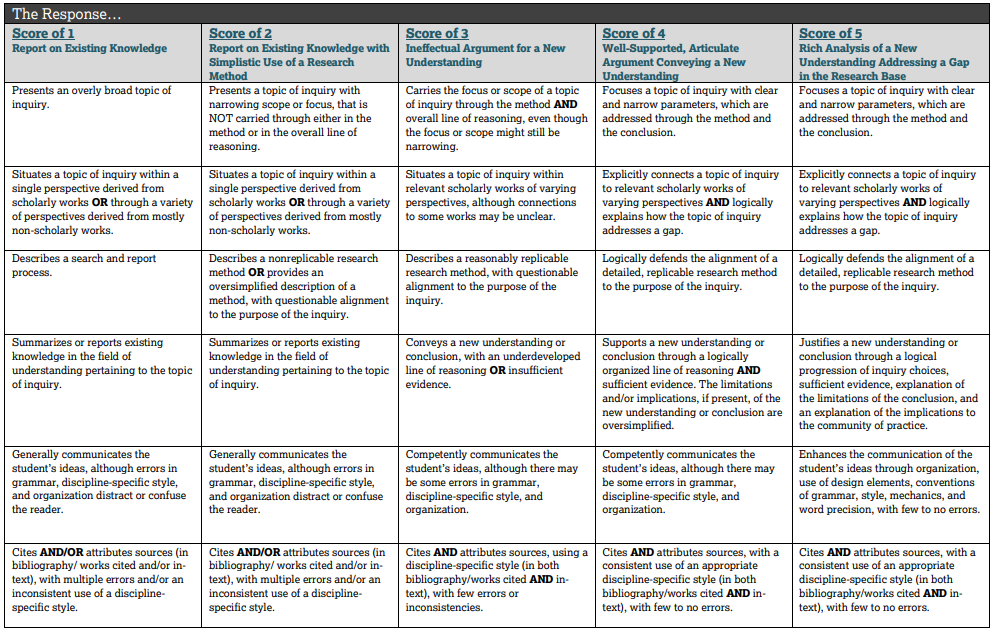Academic Paper: Introduction
6 min read•june 18, 2024
Dylan Black
AP Research 🔍
28 resourcesSee Units
Introduction (Pun Very Much Intended 😉)
Time to start writing! As with most papers, the first section that you'll be expected to write for your academic paper is your introduction. "What's the point of the intro?" you may ask. Well, as the title of the section implies, the introduction is meant to introduce your paper and establish your narrow topic of inquiry with some basic introduction to the content matter.
It's important in AP® Research to remember that your audience will most likely know less about your specific topic than you do. After all, your research will most likely be so niche and narrow that you will be an expert on it by the time you're done with the class. Therefore, not only does the introduction serve to explain in brief terms what your research topic is and what your paper accomplishes, but it also gives context to your reader as to the larger scope of your issue, slowly but surely narrowing into your topic of inquiry. It's important to note that your introduction is not a mini-lit review. Your introduction can stay relatively broad, explaining the surrounding scope, while still explaining that you are studying a more specific aspect of a topic.
🔥 Pro Tip: Even if you are writing for an audience with way more knowledge than you, giving context is important because it establishes tone, credibility, and makes sure that your readers know what to expect. Think of the introduction as a movie trailer, but for your paper.
Your introduction will also outline the goals of your project and what you hope to accomplish by performing your research. In essence, what are you going to do? Without further ado, let's dive right in!
How to Write a 🔥 Introduction
What Makes a Great Intro Great?
I'll be honest, the introduction is not a particularly difficult part of the paper to write, nor a particularly long one (we'll get into word counts a bit later). The introduction serves very specific key purposes that, if done well, make for an amazing start to a hopefully even more amazing paper.

Image from GIPHY.
Background Info / Context
Arguably the most important function of an introduction is to establish the larger context around your research question. The way to do this is by outlining the big ideas of your paper in a similar fashion to how you idealized your topic of inquiry as described in the previous guide. Starting broad and explaining the big ideas and then slowly explaining how this connects to your eventual narrow focus. Supporting this funneling of ideas can be tricky, but necessary. This is because introducing your big ideas provides context to your readers that is instrumental in understanding your narrow topic.
Where might you get the knowledge/content for your context? Well, the answer is pretty simple. Remember all that little-r research you did (and hopefully are still doing 👀)? Now's the time for you to show it off and use it! Along with using your sources as information and contextual evidence, looking at the introductions of similar papers to your discipline and topic of inquiry is an excellent strategy for making sure that you're writing your paper correctly. The tough part about AP Research is that there really is no "right" way to do things for the class, but things do have to match up to your topic. For example, a historical paper might spend a lot more time on context and establishing a proper background for a specific historical event, whereas a more scientific paper might spend a little less time on context and more time outlining the goals. Different disciplines will produce different papers.
Goals of Your Project
The next function of your introduction is to outline the overall goal of your project. What is your project going to accomplish? Whether it's answering a specific research question, or proving whether or not something is effective, or any other number of goals for your research, this must be established in your introduction. By making your goal and purpose clear from the get-go, your reader knows what to expect and what everything following is meant to do.
If you introduce your paper without at least a relative understanding of what you want to achieve, your reader won't know why they are reading the information they're reading. It would be watching a game of soccer without knowing that their aim is to kick the ball into the goal. Sure, the players are kicking around the ball and it looks like they're doing it well, but why? What's the point? Explaining this to your readers in the context of your paper is integral to your introduction.

Image from GIPHY
Breaking Down the Rubric + Logistics
The Rubric + What the CB Expects
Before we get into what the CollegeBoard expects on your introduction,

Image from College Board.
The rubric for AP Research is . . . interesting. Taking a look at this rubric, you may see some themes across rows. First and foremost, each row takes on roughly one of the sections in the paper. The first row is your intro and some of your literature review, the second is your literature review, the third is methodological, so on and so forth. However, you many also notice that the justifications for scores of one through five are super super vague. Very little of this rubric is tied to specific content—it's fairly holistic and subjective. The reason for this is pretty simple—every single AP Research paper is different, so the CollegeBoard needs to keep things broad. This is why so much of the rubric refers more to the writing of the paper itself and not to the content. Again, teachers who are reading your paper most likely know very little, if anything, about your topic of inquiry.
The Introduction and the Rubric
The introduction is a relatively small part of your paper, but it plays an incredibly important role, providing a larger context about the relevancy and the importance of your research and explaining the overall point of it. This corresponds mostly to row one of the rubric, though realistically the introduction doesn't really have a row of its own. Let's get a closer look.

Image from College Board.
This row primarily focuses on how narrow your topic of inquiry is presented. To move from a 1 to a 5, you'll need to express a clear, narrow topic. While the introduction is never explicitly mentioned, the explanation of your purpose and topic of inquiry starts there and if you don't address it, it will weaken your paper. Your method and conclusion play a role in this too: Your method explains how you plan on achieving your purpose and why
Final Thoughts
At this point you should be armed and ready to take on your introduction! The introduction, while short and quick to write, is one of the most important components to your research paper, because it sets up everything else! Think of it like a race. Even if you run a perfect race, if you trip at the very beginning, you'll be off from the get go. However, if you start sprinting the second the starting gun fires, you're sure to win. That's not to say you should focus 110% of your effort on the introduction—in fact, sections like the literature review are just as important as the content of your paper—but it is to say that you should make sure that your introduction explicitly has the things that we talked about earlier: a clear and narrow focus with broad context and an explanation of the purpose of your paper. With these tools in hand, you should be set to write the best introduction AP Research has ever seen!

Browse Study Guides By Unit
🤨Unit 1 – Question & Explore
🔎Unit 2 – Understand & Analyze
👥Unit 3 – Evaluate Multiple Perspectives
💡Unit 4 – Synthesize Ideas
🗣Unit 5 – Team, Transform, & Transmit
🎓The Academic Paper
✏️Frequently Asked Questions
📚Study Tools

Fiveable
Resources
© 2025 Fiveable Inc. All rights reserved.